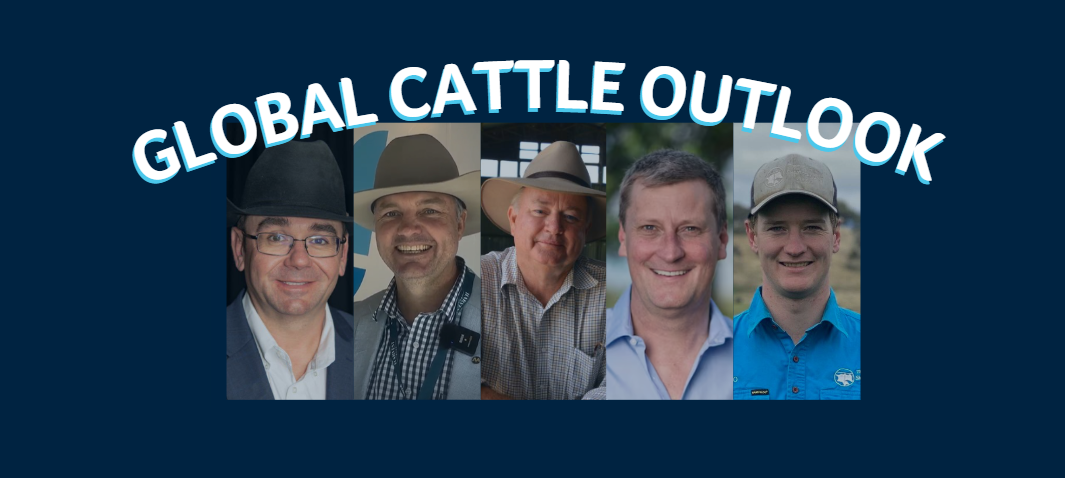The Australian Beef Market in 2025: An Absolute Cracker
In this column in July, the StoneX H2 2025 Australian Cattle & Beef Market Outlook’s bold calls were analysed and assessed for what the final 6...

Wednesday’s financial results for Australia’s largest listed cattle operation, AACo, showed just how much impact last year’s drop in prices hurt the company’s balance sheet.
The value of AACo’s herd dropped $150 million when marked to market – an unrealised loss that should turn around if cattle prices do. But how likely is that to happen? We asked some of the industry’s biggest names while at Beef 2024. Here’s what they said.
"I think it’s in a moderate position at the moment, but with an optimistic outlook.
I don't think we're going to bounce out of this thing. We thought even 12 months ago we would have seen more positivity than now and more price movement. I think the overarching consensus is it's going to be a slow burn out of this.
That's probably not a bad thing for us long term. I don't think anyone enjoys that real peak/trough (scenario). Let's slowly work our way out of it and get to a really resilient, sustainable state."
Just prior to attending Beef 2024, David Foote had been traveling extensively
"Europe's soft, demand is weak, food service is slow. I came through Asia last week, it's the same, it's not bubbling along, people have not been buying in front of themselves (pre-ordering) because the market's not there.
China is ultra soft and there's so much in the world relying on China to soak up its volumes. Even the South Americans, as recently as last week, were complaining about the price drops that China is offering them. And their cost of goods is generally about half that of quality Aussie beef.
The bright spot at the moment is the Middle East and the U. S.
That's all to do in the U. S. with their herd dynamics and their burger trade. So, that's still great for Aussie farmers, but we are 70 percent reliant on exports.
The Aussie dollar, where it sits, is helping. (But) I just don't see anything jumping out of its skin to soak up any (extra volume).
If we increase our production by 20%, I think it would come with price pressure."
"(The US herd) is the lowest since the 1960s. A lot of things have factored into that. We had a drought, high input costs, an ageing ownership group that's decided to sell out. And now the cattle are worth more than they've ever been.
We’re looking at fat cattle that at the end of this year could be worth over $2 a pound ($6.65/kg), which we've never seen.
We all hoped for a fast rebuild but I think where we're seeing labour and interest rates holding folks back (from) taking a big loan out and buy cows and then take on the added work. There's a lot of risk involved with that where they can just sit still, make record prices and sell the cattle they got.
It's going to be a slow and long rebuild (and) I don't know if we will ever get back to our high point again, at least in the near future."
"The Australian and U. S. cattle markets follow a very similar cycle. So (US herd size) is increasing our export demand, particularly for the sort of lean beef at the 90cl product that gets exported to the U.S. immensely. But that export demand goes a long way to go through the supply chain before it really impacts cattle prices here.
Cattle prices are predominantly influenced by our herd numbers and our restocking or destocking phases. But that herd size certainly put a real floor in the market at the moment, and that's a long, slow rebuild.
I think we're in for the same sort of trajectory, two or three years of increasing prices as part of that cycle."
ALSO READ: What is the ideal birth weight for your herd?
"The supply and demand dynamics are playing out as they are. We've started to see red meat prices starting to recover. We've had pretty good cattle prices overall. We obviously had that big, crash last year but I think the market was overcooked when that happened anyway.
I think the financial dynamics for beef producers are fantastic. The Beef Sustainability Framework shows that we're making significant progress in terms of greening our industry. So I think we have a tremendously bright future.
What I'd really like producers to start thinking about is, if I look at the production dynamics of my farms, how do I operate it more profitably?
Is there a way to bring in some more regenerative practices that end of the day take costs out of your business, but actually produce a better outcome for the land. Then we've got things like soil carbon as another revenue (stream). And then obviously biodiversity is coming later down the field."
.jpg)
In this column in July, the StoneX H2 2025 Australian Cattle & Beef Market Outlook’s bold calls were analysed and assessed for what the final 6...
.png)
Each December we save the last article of the year for a bit of a crystal ball gaze, as we try to bring together market fundamentals and work out...
.png)
Australia’s wool market posted another strong performance this week, with all micron categories attracting solid support across the three selling...